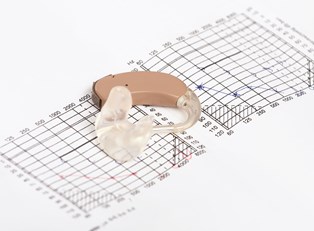If you’ve had hearing problems, chances are you’ve headed to an audiologist at least once. These professionals specialize in the treatment of disorders of the ears. Aside from diagnosing problems, they handle every step along the way including both counseling and rehabilitation. It is a very important job, and if you plan on pursuing a career in audiology, be sure to know these important terms.
- Vestibular System
If you’re going to study the vestibular system, you need to know what it refers to. The vestibular system directly references the inner ear portion of the balance system. - Tympanometry
This is an audio test that assesses the quality of the tympanic membrane. After a probe is inserted into the ear, a reflected tone is measured as the pressure changes while the probe is sealed off. - Stapedius
The stapedius is definitely an important muscle to check out for hearing loss. The constant strain of it during loud noises increases the stiffness of the inner ear, resulting in loss of hearing because the sounds cannot reverberate as freely. - Otoscope
The otoscope, the beloved device of audiologists everywhere, is the lighting and magnifying tool that is placed into the ear canal, which allows you a quick visual overview of the state of the inner ear. - Otalgia
Otalgia is the official term for an earache or ear pain. - Mastoid Bone
The Mastoid bone, used to place bone-conducting oscillators on, is located directly behind the external ear, right above the entrance to the ear canal. - Linear/Non-Linear Hearing Aid
Since you will be assisting many people with a well-suited aid, you should know the difference between the two types. Linear aids add the same amount of gain up to a specific point no matter the intensity of the sound. Non-linear aids, however, vary these gains based on the volume of incoming sounds. - Cochlea
The cochlea, one of the most important parts of ear anatomy, is a snail-shaped section of the inner ear covered in hair cells and nerves, which translate sound vibrations into electrical charges that are then interpreted by the brain. - Inflamed Eustachian Tube
This problem, experienced at least once by the vast majority of people, occurs when the tube connecting the middle ear to the throat becomes inflamed. This is a problem, as pressure can then no longer be equalized, which leads to things like negative pressure, fluid buildup, and middle ear infections. - Degree of Hearing Loss
Finally, you’ll need to be able to articulate the severity of any hearing loss you come across. Audiologists do this by way of degrees that can be graphed on an audiogram. On a typical scale, mild is 25 to 40 dB, moderate is 41 to 55 dB, moderately severe is 56 to 70 dB, severe is 71 to 90 dB, and anything higher is denoted as profound.



